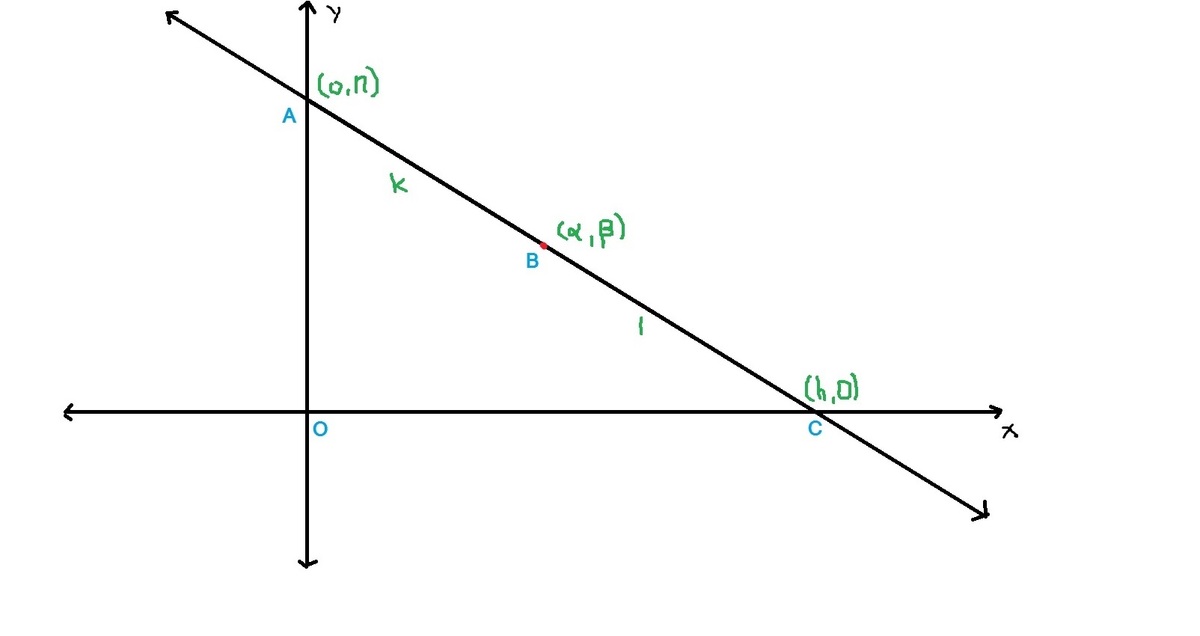Here's a statement
Area of triangle formed by the line passing through the point (α,β), with axes is maximum when point (α,β) is the midpoint of the line between the axes.
The question was to answer whether the statement was correct or not and the answer given is that the statement is WRONG.
But why?
Here's what I did,

Let A(0,n) , B(α,β), C(h,0) and AB:BC::k:1
We know, α=k+1kh&β=k+1n
⇒h=kα(k+1)&n=β(k+1)
Area of ΔAOC,
A=21×kα(k+1)×β(k+1)
Differentiating w.r.t k,
⇒dkdA=21αβ[k22k(k+1)−(k+1)2]
Equating dkdA to zero ⇒k=±1
Maxima occurs at k=1
∴ Area is maximum when k=1.
k=1⇒ (α,β) is the midpoint of A and C.
Hence, Statement is CORRECT.
#Geometry

Easy Math Editor
This discussion board is a place to discuss our Daily Challenges and the math and science related to those challenges. Explanations are more than just a solution — they should explain the steps and thinking strategies that you used to obtain the solution. Comments should further the discussion of math and science.
When posting on Brilliant:
*italics*or_italics_**bold**or__bold__paragraph 1
paragraph 2
[example link](https://brilliant.org)> This is a quote# I indented these lines # 4 spaces, and now they show # up as a code block. print "hello world"\(...\)or\[...\]to ensure proper formatting.2 \times 32^{34}a_{i-1}\frac{2}{3}\sqrt{2}\sum_{i=1}^3\sin \theta\boxed{123}Comments
An application of AM-GM will tell you why you've gotten the wrong answer.
Note that ax+by=1 is the equation of the line in intercept form. a and b are the x and y intercepts respectively.
We need to maximize △=2ab.
As α,β lies on the line, aα+bβ=1≥22△αβ
⇒△≥2αβ with equality when aα=bβ=21
So you have the minimum area, not the maximum.
Be careful when using calculus to find extrema - check minima and maxima always.
Log in to reply
Oh! yes sir, I made a mistake while checking maxima and minima! And your approach is superb!
The red curve represent dkdA and green curve represent dk2d2A
@Ameya Daigavane Sorry disturb you again, sir. But could you please post a solution to below question?
A variable line, drawn through the point of intersection of the straight lines ax+by=1 and bx+ay=1, meets the coordinate axes in A andB. Then find the locus of the midpoint of AB.